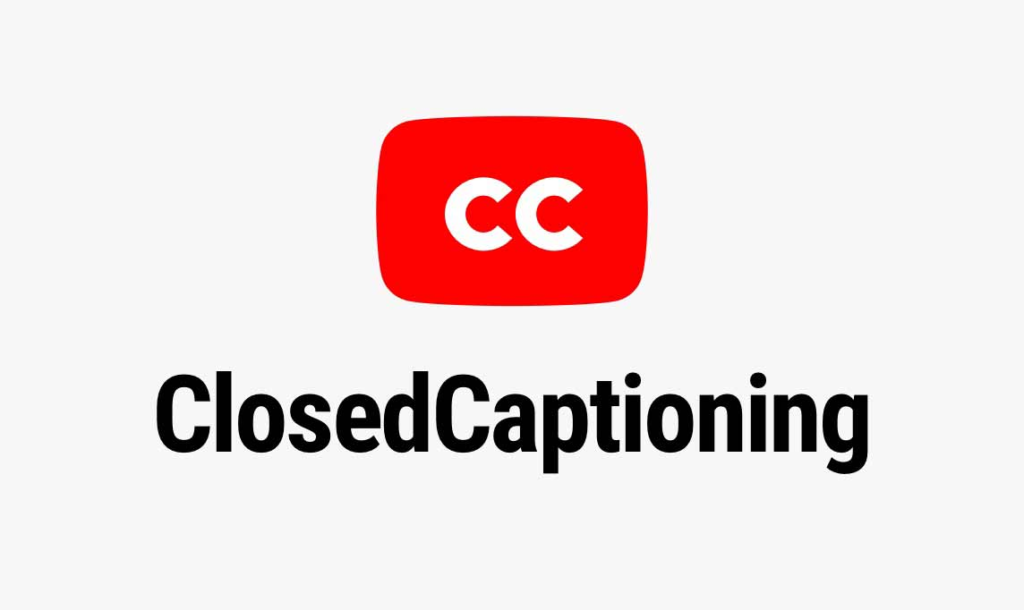Closed captioning can be very useful in noisy environments or in ones where the sound needs to be muted. It can also be helpful for children or non-native speakers when learning the captioned language. In fact, the original motivation behind closed captioning was that it was primarily created to assist people who are deaf or hearing-impaired in comprehending the audio content of a video.
Closed captioning provides people an option to display the audio portion of a video as text on the bottom portion of the screen. Different from subtitles, closed captioning contains more information pertaining to the content. It not only transcribes dialogues but also explains sound effects, settings, and speaker identification to help ensure that viewers can follow along. This technology is extremely important because it provides “a critical link to news, entertainment, and information for individuals who are deaf or hard-of-hearing. (FCC)”
Closed captioning is a highly inclusive design because, firstly, in terms of utility, closed captioning allows people with impaired hearing to understand the audio content well which meets real user needs.
Secondly, the technology is highly usable. With accuracy, the Federal Communications Commission (FCC) states that closed captions must match the spoken words in the audio to the fullest extent and they must also be synchronized. Though transcribed dialogues can hardly capture the emotion in it, the additional explanations of sounds effects and settings allow watchers to understand the video effectively.
Thirdly, the accessibility of closed captioning is very high. Enforced by FCC under the authority of the Communications Act, broadcasters, cable companies, and satellite television service providers must “provide closed captioning for 100% of all new, non-exempt, English language video programming.” Closed captioning is also provided on the majority of online streaming service platforms like Netflix, Youtube, Vimeo, Hulu, Disney, etc. Even when there is no closed captioning option for an online video, users can easily install closed captioning software to generate captions.
Fourthly, for desirability, closed captioning brings convenience and satisfaction to almost every video watcher. It enables people with disabilities to enjoy videos for entertainment and have common topics with friends. It also allows people to watch videos on the subway without turning sound on, to understand the video when they don’t quite know the language, and even to search the video more easily.
Fifthly, the closed captioning feature is almost free for every streaming platform so it’s highly affordable.
Moreover, closed captioning has proven to boost the views of videos for businesses. For instance, captioned YouTube videos had a 13.48% increase in views within the first 14 days they were published. The lifetime benefit of closed captioning videos to be 7.32% more views on YouTube than uncaptioned videos. Thus, we could see that closed captioning helps achieve success for companies and proves its high viability.
At last, closed captioning has high compatibility as the majority of TV service providers, cable companies, and online streaming platforms provide the option for users to turn on captions, which conforms to the rules set by FCC.

Closed captioning ties to the social model of disability. While videos without captions create disabling conditions for people with hearing deficiencies, closed captioning enables them to modify their environment as needed and enjoy videos, movies, tv shows as everyone else.
Closed captioning also potentially align with the functional solutions model as businesses sense the needs of people with hearing impairment in watching videos and therefore develop closed captioning to overcome the limitations of disability.
As much as we all enjoy having the option of turning on captions while watching videos, captioning is not a choice for the 5% of the world’s population with auditory disabilities, and when it is not available they cannot fully understand the content in videos. Therefore, closed captioning is an extremely important assistive tool for people who are deaf or hearing-impaired as it allows them to participate fully in all aspects of life.
References:
The Federal Communication Commission. Closed Captioning
National Association of the Deaf – When is Captioning Required
